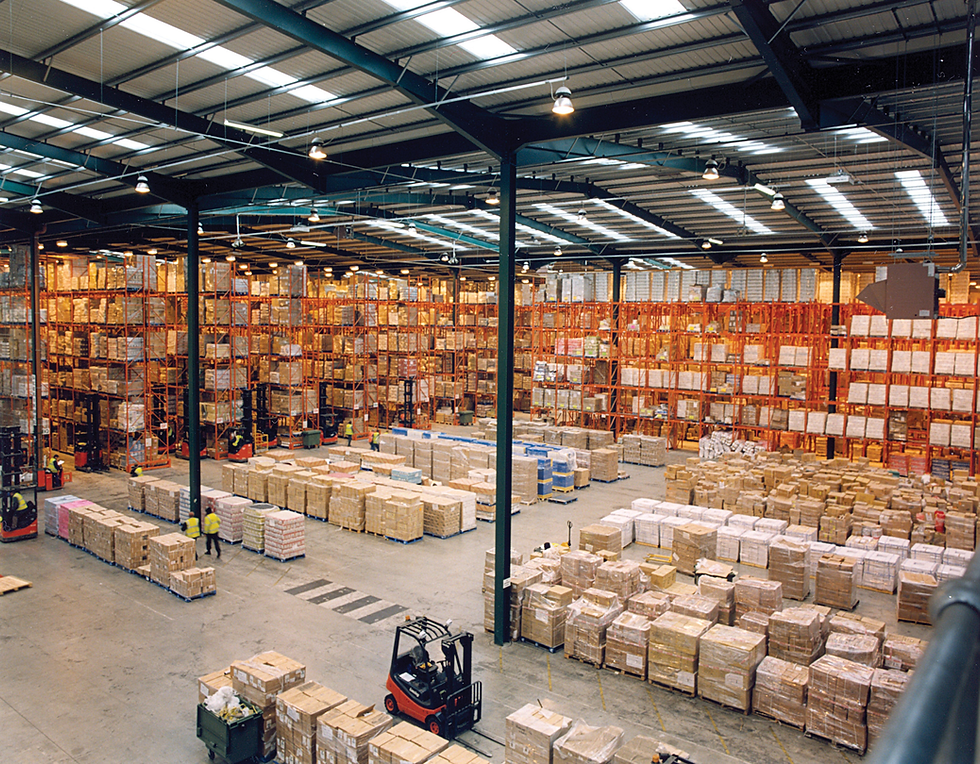Supply Chain De-Carbonization
- Rajesh Sharma

- Sep 21, 2024
- 4 min read
Supply Chain De-carbonization
This blog will discuss about De-carbonization in the supply chain, especially in the port and logistics sector across the Indian subcontinent, is a key strategy for addressing climate change and reducing greenhouse gas emissions. Ports, logistics hubs, and transportation are significant contributors to carbon emissions, but they also offer substantial opportunities for implementing sustainable practices.
Here’s how de-carbonization can be approached in the context of the subcontinent’s port and logistics sector:
1. Electrification of Port Operations
Shifting to electric-powered equipment: Ports traditionally rely on heavy diesel-powered machinery such as cranes, forklifts, and trucks. Transitioning to electric-powered alternatives reduces emissions and local air pollution.
Shore power (cold ironing): Ships often run their engines while docked to power onboard systems, leading to emissions. Installing shore power systems allows vessels to plug into the local electrical grid, reducing the need to run engines and cutting emissions.
Hybrid and electric vehicles: Shifting to electric or hybrid vehicles within port operations can substantially reduce emissions from internal logistics.
2. Cleaner Fuels for Shipping
Adoption of low-carbon fuels: The shipping industry is a significant source of emissions. Investing in low-carbon fuels such as liquefied natural gas (LNG), biofuels, hydrogen, or even ammonia-based fuels can contribute to reducing the sector's carbon footprint.
Retrofitting ships: Retrofitting older vessels with modern, fuel-efficient engines and hull designs can improve efficiency and lower emissions.
3. Renewable Energy Integration
Solar and wind energy for ports: Ports can integrate renewable energy into their operations by installing solar panels and wind turbines. This can supply green energy to power operations and reduce reliance on the conventional grid.
Battery storage: Large-scale battery storage can help balance the intermittent nature of renewable energy sources and provide a reliable power supply for port operations.
4. Logistics and Transportation Optimization
Modal shift to rail and inland waterways: Encouraging a shift from road transportation to rail and inland waterways for cargo movement can significantly lower carbon emissions. Rail and waterways are far more energy-efficient than trucks for long-distance freight.
Optimization of logistics routes: Advanced route-planning algorithms and digital tools can minimize distances, improve fuel efficiency, and reduce idle times.
Last-mile de-carbonization: Electrifying last-mile delivery vehicles, such as electric trucks or e-bikes, can further reduce carbon emissions in urban logistics.
5. Green Building Infrastructure
Sustainable port infrastructure: Building energy-efficient warehouses, terminals, and other infrastructure using sustainable materials and smart energy management systems can reduce the carbon footprint.
Green certification: Ports can aim for certifications such as LEED (Leadership in Energy and Environmental Design), which encourages eco-friendly building practices.
6. Carbon Pricing and Emission Regulations
Adopting carbon pricing mechanisms: Governments and industry stakeholders can introduce carbon pricing or taxation mechanisms to incentivize lower emissions.
Compliance with international standards: Aligning with international regulations such as the International Maritime Organization’s (IMO) emissions guidelines, including the Energy Efficiency Existing Ship Index (EEXI) and the Carbon Intensity Indicator (CII), can drive change.
7. Digitalization for Emission Monitoring
Real-time tracking of emissions: Implementing digital systems for real-time monitoring of emissions in port and logistics operations can provide actionable insights to reduce carbon output.
Blockchain for transparency: Using blockchain technology to enhance transparency in supply chains ensures accountability and can reduce inefficiencies, ultimately lowering emissions.
8. Collaboration and Stakeholder Engagement
Public-private partnerships: Governments, port authorities, shipping companies, and other stakeholders need to collaborate on decarbonization initiatives. Public-private partnerships can fund innovative projects and support the deployment of sustainable technologies.
Cross-border cooperation: Given the interconnected nature of the subcontinent’s supply chains, cross-border cooperation on policies and technologies can ensure a broader impact across the region.
Challenges in De-carbonization for the Subcontinent
Infrastructure limitations: Many ports and logistics systems in the subcontinent may lack the infrastructure necessary for transitioning to cleaner technologies.
High initial investment: The capital cost for electrification, renewable energy systems, and cleaner fuels can be substantial, although long-term savings are significant.
Policy alignment: National policies across countries in the subcontinent may vary, making it difficult to implement uniform decarbonization strategies.
Technological readiness: The availability and maturity of technologies like electric-powered heavy machinery and low-carbon fuels may not be uniform across the region.
Examples of Ongoing Initiatives:
Adani Ports: One of India’s largest port operators, Adani Ports and Special Economic Zone (APSEZ), has committed to becoming carbon neutral by 2025 through renewable energy adoption, electrification, and operational efficiency improvements.
Jawaharlal Nehru Port (JNPT): India’s largest container port has implemented solar energy solutions and is transitioning to cleaner fuels and energy-efficient systems.
Conclusion
Decarbonizing the subcontinent's port and logistics sector is a multifaceted challenge that requires adopting cleaner technologies, smart infrastructure investments, policy support, and regional cooperation. With the right strategies in place, it is possible to transform the sector into a sustainable, low-carbon system that can support both economic growth and environmental protection.
Rajesh Sharma
SAP WM/EWM Functional Consultant
§ Linked in profile: https://www.linkedin.com/in/rajesh-sharma-204910278/
§ Twitter: RajeshS98151512/ RAJESH SHARMA@RAJESHS21287609
§ SAP Blogs: https://www.sastrageek.com/blog











I have been a customer of Conway Corp Utility for several years now, and I must say that their customer service is top-notch. Every time I have had to contact them with a question or concern, their representatives have been extremely helpful and knowledgeable, also find customer service contacts at https://www.pissedconsumer.com/company/conway-corp/customer-service.html . They always go above and beyond to ensure that my issues are resolved in a timely manner. The experience of using their services has been seamless and hassle-free, making me a loyal customer. I highly recommend Conway Corp Utility to anyone in need of reliable and efficient utility services.